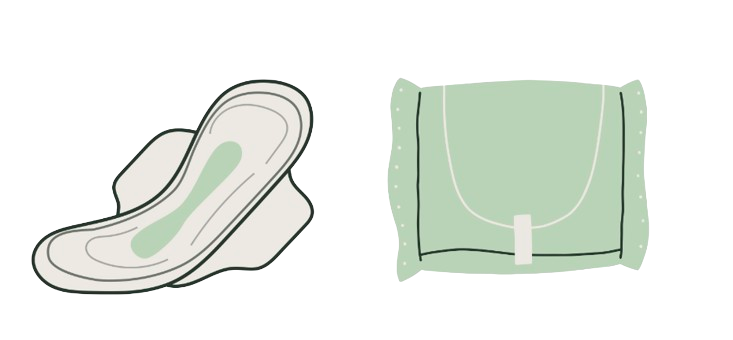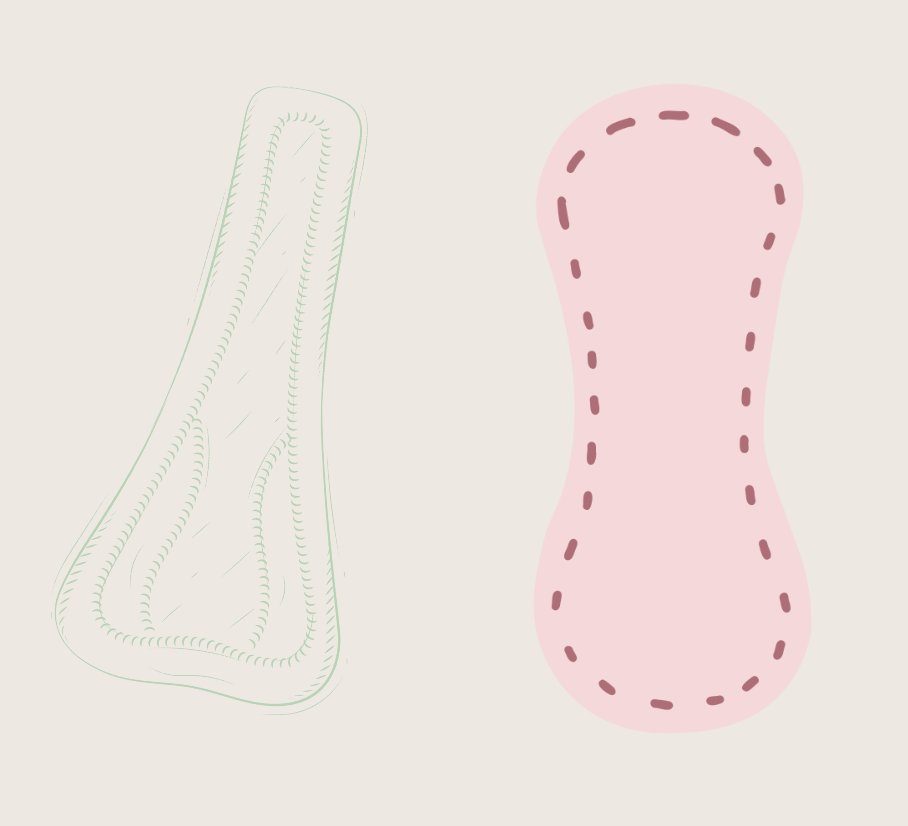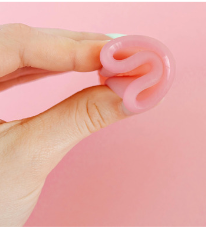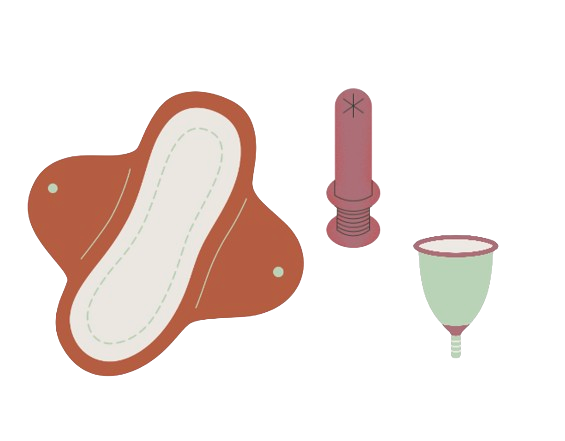Period Products: Pads, Tampons & Menstrual cups
bloomwell,
#periods

The most common period products are pads, tampons and menstrual cups. Below you'll find a description for each (as well as the eco-friendly versions) and the pros and cons.
Pads (aka sanitary towels/napkins)
Pads are easy to use and don't require putting anything in the vaginal canal, making them the best option for young people who are new to periods and those with vaginismus.
There are many different types of pads you can get in a variety different sizes. The heavier your flow the larger/ thicker pad will want to use, it is also often better to pads with 'wings' which are sticky flaps on either side on the pad which wrap around your underwear to prevent the pad from moving too much.
It's best to change your pad every few hours depending on how heavy your flow is, you may want to change them more often for comfort.

Panty liners (aka mini pads)
Panty liners are a form of pad which are smaller and thinner, they're most often used when spotting (little bleeding but not a full period, often at the very end of the period or during the rest of the month) or if you have heavier discharge.
see here for article on discharge

Tampons
Tampons are small cotton cylinders that are inserted into the vaginal blood to almost act as a plug to prevent blood from leaving the vagina. The tampon absorbs the blood and expands. The first few times you use a tampon you may feel some discomfort, however, tampons are never supposed to cause pain so if you experience pain remove it immediately.
It's important to change your tampon when you use the toilet and 4-6 hours to prevent bacteria spreading and causing infections such as an urinary tract infection (UTI). Additionally it is very important to change your tampon regularly to avoid being at risk of toxic shock syndrome.
Read more about toxic shock syndrome here.

How to insert / remove a tampon:
With applicator:
1. Read the instructions on the package, some tampon applicators first require you to pull the bottom part down till it clicks.
2. Insert the entire top part into the vagina (see diagram below), it is often easier to do this at a slight angle towards the back whilst sitting on the toilet. It can also help to use your other hand to separate your labia (outer flaps) and slightly stretch the vaginal opening to make it easier to find where to enter the tampon. You may feel some discomfort but if you feel pain do not force it. You may be trying to insert the tampon into your urethra or the muscles of your pelvic floor may be tensing preventing you from inserting the tampon into the vagina, if thats the case try some relaxation methods then reproach inserting the tampon or opt for a pad.
Click here for relaxation tips and methods
3. Once the top section is fully in the vaginal canal, push the bottom part upwards to insert the tampon. Its easier to hold the bottom part of the top section whilst you do this. You can then remove the applicator and the cotton tampon should stay in the canal. Only the string should be outside the vagina, if any of the cotton part is outside you will feel discomfort and it may lead to the blood leaking, if this is the case either use a finger to slightly push the tampon in further or take it out and start again with a new tampon / applicator.
4. When you're ready to remove the tampon simply just pull on the string (sometimes it takes a bit of a harder pull but don't be too rough!) then dispose of the tampon. Not all toilets can handle tampons being flushed so its always safer to wrap the tampon in some toilet paper and throw it in the bin

No applicator:
Those more comfortable with tampons may prefer to not use an applicator and insert the tampon using their fingers. To do this you one hand to separate the labia and slightly stretch the vaginal opening then insert the tampon, using a finger to make sure it's pushed in far enough for only the string to be outside of the vagina. Removal is the same regardless of using an applicator
Menstrual Cups
Menstrual cups are similar to tampons as they sit in the vaginal canal and act as a 'plug', however rather than absorbing the blood, menstrual cups are (like the name) little cups that fill up with blood as it leaves the uterus. Unlike tampons, menstrual cups are usually reusable, meaning you don't need to purchase them often and can simply pour out the blood into the toilet and wash between use. Menstrual cups can also be left in longer approximately up to 8-10 hours, however with a heavier flow you may want to empty, wash and reinsert more often to avoid leakage. Like tampons, it is very important not to to leave it in too long to avoid risk of toxic shock syndrome.
How to insert a menstrual cup:
1. Slightly bend the menstrual cup to make the top smaller and easier to enter into the vagina

2. Insert into the vaginal canal making sure the entire cup is in the vagina then release it allowing it to unbend an regain a its cup shape
3. To remove insert your fingers into the vagina and lightly squeeze the cup to release the pressure seal it would have made then carefully pull out the cup, its best to do this over the toilet so any blood spilled can just fall into the toilet.
How to clean your menstrual:
Read the instructions on the packaging of your menstrual cups as menstrual cups differ, however, the most common method to clean is to poor the blood into the toilet then rinse the cup in the sink between changes. After use then put the rinsed cup into boiling water to sterilise it.

Eco Friendly Period Products
Menstrual cups are eco-friendly however disposable pads and tampons (and their plastic packaging) can be damaging to the environment as they can't be recycled (obviously ew).
However, you can get reusable pads made from absorbent cloth that can be washed (like normal clothes) between use. Although there aren't reusable tampons, you can buy reusable tampon applicators to cut down on plastic waste. These are easy to use as they function like disposable tampon applicators, just wash between use.

Share your thoughts
We're on a mission to bring our community the best content! Loved this article? Got ideas to make it even better or suggestions for future topics? We'd love to hear from you! Your input shapes the future of our content.